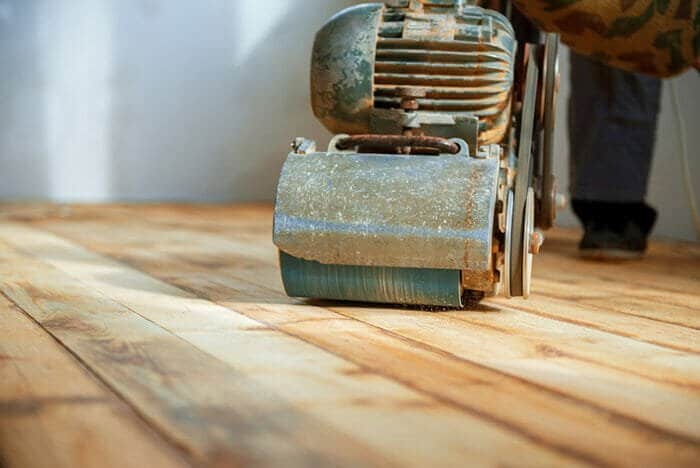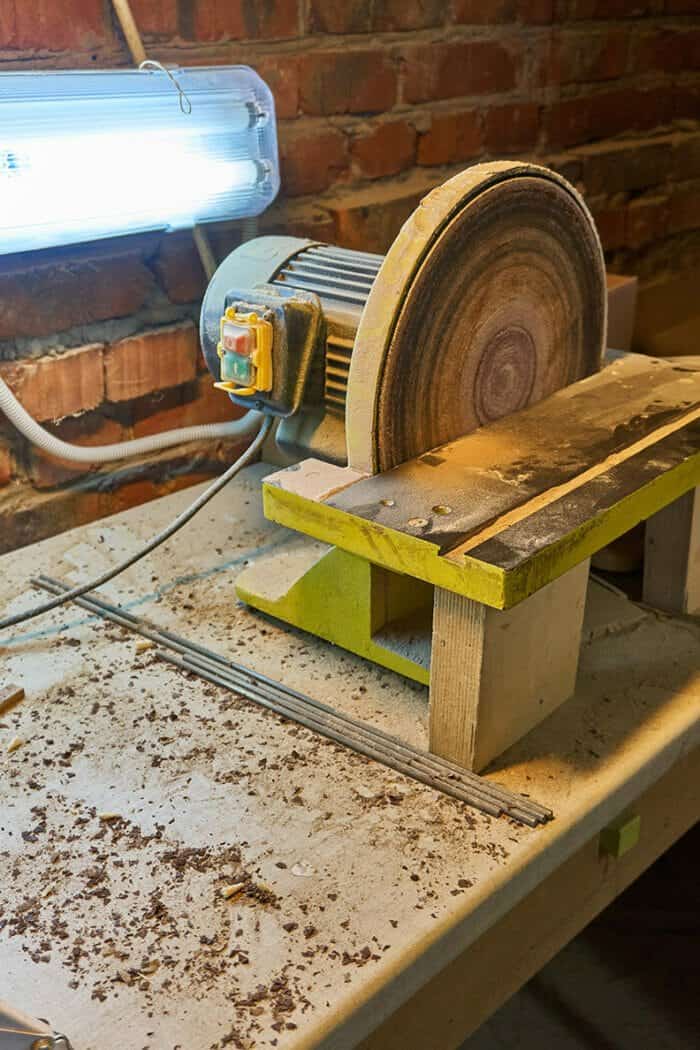When it comes to DIY, sanders are one of those tools that are often recommended to anyone starting to get their teeth into home improvements. To begin with, most people start off with just a sheet of sandpaper and go from there. There is nothing wrong with using just sandpaper if you are working on a particularly small scale but when it comes to anything bigger like preparing a cabinet for painting or wanting to prepare your wood floors to take a stain, machinery is the way to go. This article has been compiled to introduce you to the top 5 suggested sanders for home use.
Sander Safety
• Always wear gloves. This is to keep your hands safe from the sandpaper if you slip, as well as increasing your grip on the sander itself. Gloves also keep any cuts or grazes free from dirt and dust.
• Always wear eye protection (glasses aren’t enough, get a pair of safety goggles).
• Always wear a mask. Yes, even if using the sander outdoors. Your lungs will not thank you if you inhale a lot of wood dust while you are working.
• Work in short bursts. This will help you to maintain maximum control over the sanding process while also ensuring that you don’t tire too quickly.
Sander Types
[1] Random Orbital Sander

Random orbital sanders do what they say on the tin, essentially. When on, they sand in a random manner, hence ‘random’. This is one part of the movement of the sander. Next, ‘orbital’ refers to the circular motion that the head of the sander makes. This is the second part of the movement. These two movements combined make up the sanding action as a whole. They are versatile tools that are ideal for surface improvements, such as refurbishing cabinets, smoothing a table, and taking the sharp edges off a woodworking project. They are not optimal for larger projects. They also don’t take away a lot of the wood, meaning that they aren’t suitable for getting rid of knots in the wood or taking the level of the wood down. They are on the cheaper end of the sander scale which makes them a good tool to start with, as a step up from manual sanding.
Pros
• No gouges or grooves left behind after sanding.
• Inexpensive compared to some sanding and home DIY tools.
• The sandpaper used is affordable.
• Easy to control.
Cons
• Not good for deeper sanding, compared to surface sanding.
• Vibration tires the hand quickly.
[2] Belt Sander

Belt sanders incorporate a continuous loop of sandpaper. This type of sander is good for removing the initial roughness of the item you are wanting to improve. However, due to the structure of the sander itself, they aren’t ideal if you are wanting to go right up to the edge of something, such as along skirting boards if adding the finishing touches to your floor before you stain it. Getting a new reel of sandpaper on the mount can also be fiddly if you aren’t used to doing it.
Pros
• Ideal for tough surfaces.
• Ideal for stripping paint.
• Good for initially smoothing projects.
Cons
• The sandpaper can be difficult to mount.
• Hard to handle.
• Difficult to keep on track.
[3] Rotary Sander

This type of sander can be either handheld or floor-mounted. Floor-mounted rotary sanders are controlled in a similar manner to how you’d control a lawnmower or vacuum cleaner. This degree of control definitely is something of a bonus as it is likely to be already familiar to you. Despite this parallel, they can still be a little difficult to control so this type of sander is better for more experienced DIYers or tradespeople looking to add to their arsenal.
Pros
• Effective for smoothing down edges.
• Potential for a mirror-like finish.
• Ideal for smoothing and rounding off edges.
Cons
• Can be hard to control.
• Challenging for people new to sanding.
[4] Drum Sander

This type of sander is exceptionally heavy duty. To be honest, we don’t expect to find this in many people’s homes due to the limitations regarding its use and the price tag alone, but as you may encounter one at work, it is worth mentioning as it is still a sander. Drum sanders use a belt-style mechanism to secure the paper. They are floor-controlled only and can only be used to tackle solid wood flooring. This means that they aren’t ideal for a lot of homeowners.
Pros
• Takes down and levels off problematic flooring easily.
• Effective.
Cons
• Heavy and large; cumbersome overall.
• Expensive.
• Can be used to sand solid wood flooring only.
• Limited application.
[5] Spindle / Disk Sanders

This category refers to the two main types of table-mounted stationary sanders. Spindle sanders are where the sandpaper is mounted on a tube-like base. Disk sanders are like a tabletop version of the orbital sander. While these are more stable than some types of sander and offer more control, the downside is that their stationary nature makes them limited in terms of what you can do with them. Using them also takes practice, more so than say, the belt sander. This isn’t a disadvantage as such, but it is something to bear in mind.
Pros
• Stationary.
• Stable.
• Good machine control.
Cons
• Difficult to control what you are sanding.
• Impractical depending on what you want to sand.
